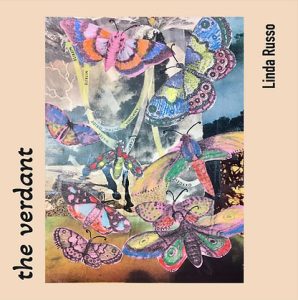Boulevard – Fall 2012
Volume 28 Numbers 1 & 2
Fall 2012
Triannual
Kenneth Nichols
Once again, Richard Burgin and his team present a well-rounded collection of fiction, nonfiction, and poetry that will appeal to the reader’s intellect and emotion alike. The impact begins with the journal’s very first piece: a new short story from Joyce Carol Oates. In “Anniversary,” Vivianne has retired from higher education and has decided to volunteer to teach writing in the State Prison Education Program. Vivianne has been paired with Cal Healy, a much younger and far less experienced teacher. Oates builds tension effectively and organically, taking a lot of time to explain all of the many rules one must follow to work in a prison. (Avoid blue clothing so you can’t be confused with an inmate, avoid delving too deeply into their personal lives . . . and keep an eye on that pencil sharpener.) The ending of the story alone is worth the read. Oates manipulates the reader’s understanding of the narrative, lending greater power and a more disturbing undertone to a simple ride home.
Once again, Richard Burgin and his team present a well-rounded collection of fiction, nonfiction, and poetry that will appeal to the reader’s intellect and emotion alike. The impact begins with the journal’s very first piece: a new short story from Joyce Carol Oates. In “Anniversary,” Vivianne has retired from higher education and has decided to volunteer to teach writing in the State Prison Education Program. Vivianne has been paired with Cal Healy, a much younger and far less experienced teacher. Oates builds tension effectively and organically, taking a lot of time to explain all of the many rules one must follow to work in a prison. (Avoid blue clothing so you can’t be confused with an inmate, avoid delving too deeply into their personal lives . . . and keep an eye on that pencil sharpener.) The ending of the story alone is worth the read. Oates manipulates the reader’s understanding of the narrative, lending greater power and a more disturbing undertone to a simple ride home.
As much as we like to think that humanity has evolved over the centuries, some flaws are unshakeable. In the poem “Two Plays,” Lloyd Schwarz contrasts a scene from Thomas Middleton’s 1622 play The Changeling with a grifter’s ploy that was attempted on him in Paris. The con? A stranger finds a gold ring on the ground and hands it to you, claiming you dropped it. After earning your trust, the stranger unfolds a sob story and asks you for money. Like Middleton, Schwartz trades on the important symbolism of an object as deceptively simple as a ring. Sharing a rare moment of honest contact with a woman working the con, Schwartz concludes: “She’s not a joke. She isn’t in a play. / How dare I interfere with her work? Who do I think I am?”
This nonfiction contained in this issue of Boulevard is primarily of the scholarly variety. Anis Shivani responds to criticism he received upon challenging the current state of creative writing instruction. Who can resist a respectful and spirited fight between people who are really smart? Shivani’s primary claim will be argued for a while, no doubt: “Creative Writing Is Therapy, Even if the Pedagogues Won’t Admit It.” Later in the issue, Jean McGarry and William Black consider that eternal question: “Where do writers find their material?” The authors provide good advice, using examples that range from Katherine Anne Porter to James Joyce.
Michael Nye, one supposes, finds his material through contemplation of that common dilemma: what happens to the feelings shared by parted lovers? The narrator of “A Fully Imagined World” is bringing his daughter through Cincinnati’s Natural History Museum when he spots Serena, a former lover, across the room. Sure, Kyle slipped out after their one night stand without leaving a note. Nine years later, however, “one night with Serena had become a physical ache, a dream he could call up and see and touch.” Kyle is shaken from his reverie with a quickness: his daughter disappears. The story’s denouement is deserved. We’re lost and found, Nye seems to say, all at once.
While this issue of Boulevard may be particularly interesting to academics, others are by no means excluded. For example, Geoffrey Bent’s nonfiction piece “The Virtuoso” is a detailed analysis of the life of the artist Michelangelo Merisi, better known as Caravaggio. Bent does a great service, describing the man’s life in such a way that the reader is reminded that Caravaggio was once of flesh and blood, creating art to satisfy his desire to express his humanity. Such, perhaps, is Boulevard’s aesthetic: an attempt to glorify the mind while feeding the heart.
[www.boulevardmagazine.org]




